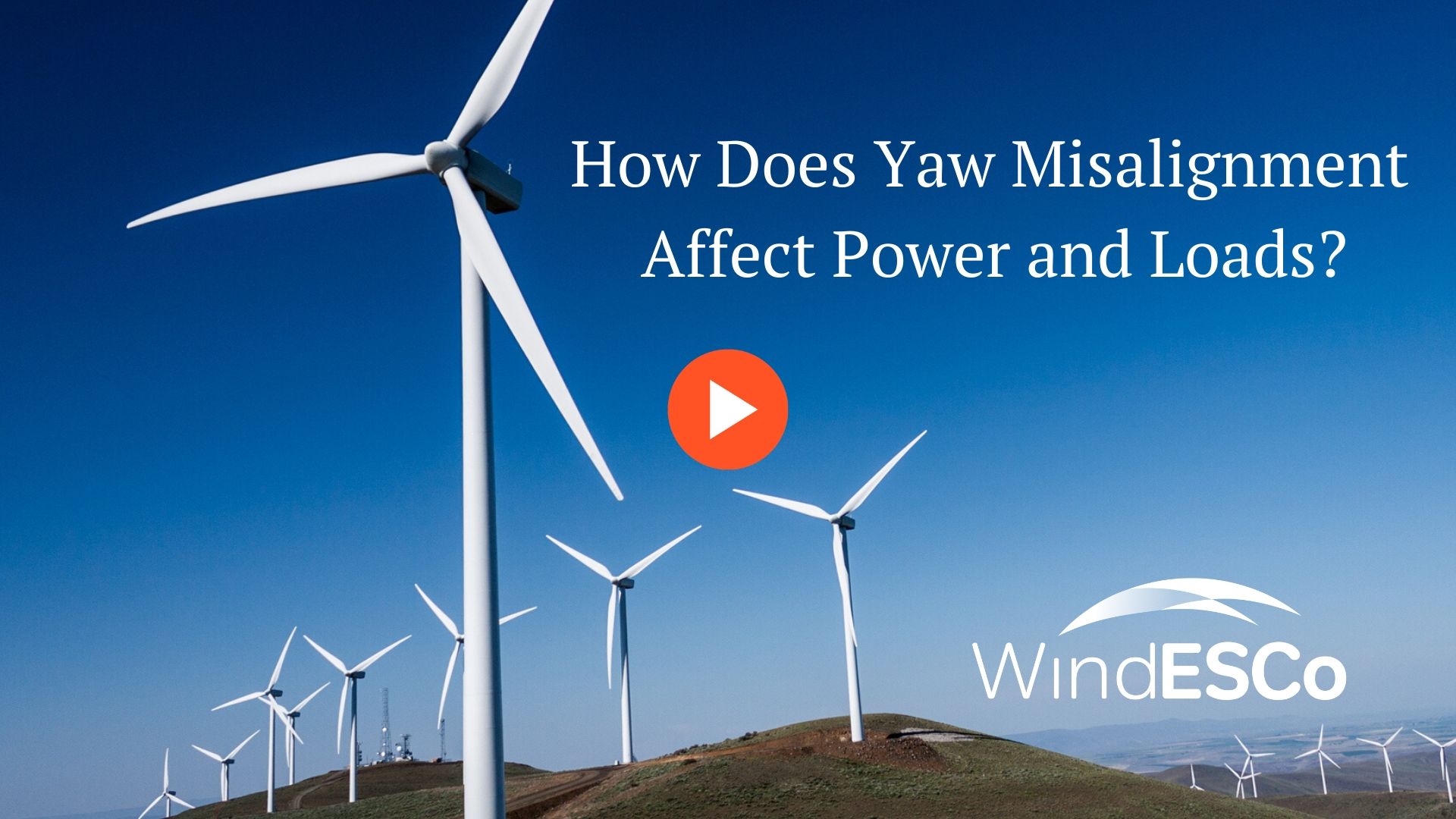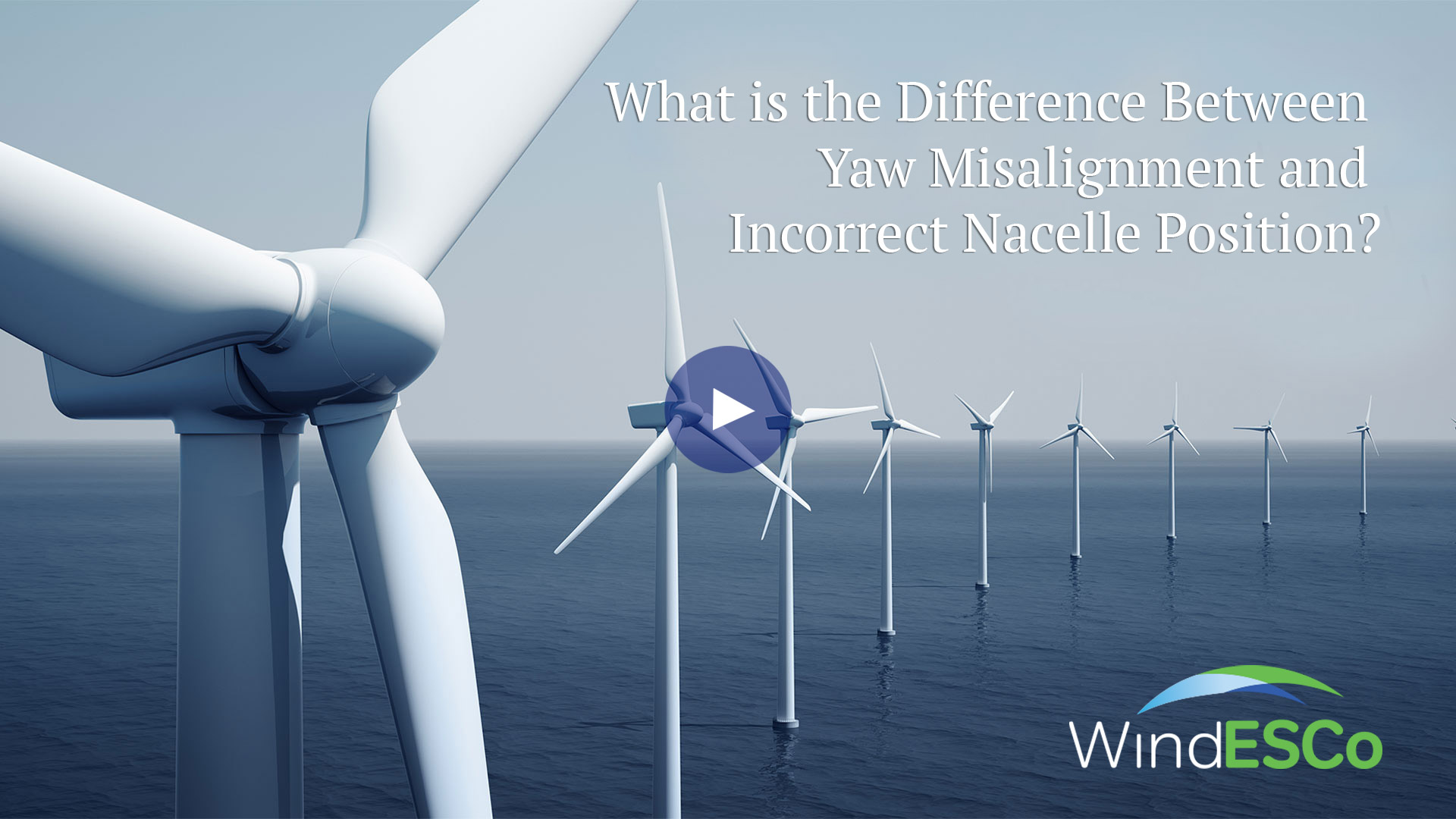How to Correct Yaw Misalignment
We've spent quite a bit of time discussing yaw misalignment. Our past blogs have addressed what yaw misalignment is, the different types, how it can...

We've previously discussed yaw misalignment in-depth: what it is, what causes it, and how to measure it in your wind project. Today we'll be diving into just how much yaw misalignment can affect power output and loads on your turbines—and ultimately—your wind plant's operating margins.
In the most basic terms, yaw misalignment occurs when your wind turbine does not face directly into the wind. Since power can only be generated by wind perpendicular to the rotor plane, any yaw misalignment will result in a power loss for a turbine. This power loss can occur due to both dynamic and static yaw misalignment.
Power loss due to static yaw misalignment is not a linear function of the degree of misalignment. A small increase in yaw misalignment can result in a significant loss of power for the turbine. Theoretically, the power loss from yaw misalignment is proportional to the cube of the cosine of the yaw error. Our real-world analysis and experimentation, on the other hand, have shown that the loss of power typically varies with the square of the cosine of the yaw error. As an example, while a 5° misalignment only leads to a loss of 1% in turbine output, a 10° misalignment can lead to a 3% loss in turbine output.
Since this loss only affects Region 2 of the power curve, the exact value will depend on how much time the turbine spends in Region 2 compared to Region 3 of the power curve. Lower wind speed sites have a higher percentage loss due to yaw misalignment compared to higher wind speed sites.
A small margin of error can have a big impact on your turbine's power output, which is why it's critical to continuously monitor static yaw misalignment to ensure optimal performance and output.
While inefficient power output in itself is the most pressing reason to address yaw misalignment, it can also affect your wind turbines' lifetime. Yaw misalignment can also cause asymmetric loading on blades, impacting the physical integrity of your turbine. When your turbine is not perfectly aligned, the wind approaches the blades at different angles throughout the blades' rotation. The loading can be significantly different for your blades on the up and downswing. As misalignment increases—even by a tiny amount—so does the difference in blade loading. The result is higher loads on the blades and on the main shaft. Not only will your turbine be producing less power than it's capable of, but yaw misalignment will also shorten your physical turbine components' life expectancy.
The adverse effects of static yaw misalignment are far-reaching, but you can address the issue in your wind project. In a recent engagement with UPC Renewables, WindESCo helped the wind plant identify and address yaw misalignment. The result: a 2% increase in AEP and a higher life expectancy for their turbines. Want to see how we did it? Download the case study to learn more.
.jpg)
We've spent quite a bit of time discussing yaw misalignment. Our past blogs have addressed what yaw misalignment is, the different types, how it can...

For any wind project, your turbines must face into the wind as often as possible to maintain optimum energy output. However, there are quite a few...
.png)
One of the most common issues that wind farm operators face is static yaw misalignment. Because this problem is invisible to the turbine controller,...